
✨✨ 欢迎大家来到景天科技苑✨✨
🎈🎈 养成好习惯,先赞后看哦~🎈🎈
🏆 作者简介:景天科技苑
🏆《头衔》:大厂架构师,华为云开发者社区专家博主,阿里云开发者社区专家博主,CSDN全栈领域优质创作者,掘金优秀博主,51CTO博客专家等。
🏆《博客》:Python全栈,前后端开发,小程序开发,人工智能,js逆向,App逆向,网络系统安全,数据分析,Django,fastapi,flask等框架,linux,shell脚本等实操经验,网站搭建,数据库等分享。所属的专栏:MySQL数据库入门,进阶应用实战必备
景天的主页:景天科技苑
文章目录
- mysql约束
- unsigned 无符号
- not null : 不为空
- default : 默认值
- unique: 唯一约束
- primary key: 主键
- auto_increment: 自增加一
- zerofill : 零填充 (配合int使用,不够5位拿0来填充)
mysql约束
在mysql中对编辑的数据进行类型的限制,不满足约束条件的报错
unsigned : 无符号
not null : 不为空
default : 默认值
unique : 唯一值,加入唯一索引
(索引相当于字典目录,索引的提出是为了加快速度,一味地乱加索引不会提高查询效率)
primary key: 主键
auto_increment: 自增加一 ,必须设置了主键才能设置该参数
zerofill : 零填充
foreign key: 外键
约束在写sql时,放在数据类型的后面,如下,放在int的后面
字段名 类型 约束
unsigned 无符号
create table t3(id int unsigned);
insert into t3 values(-1); error
insert into t3 values(4000000000); success
设置无符号位约束,插入负值就报错
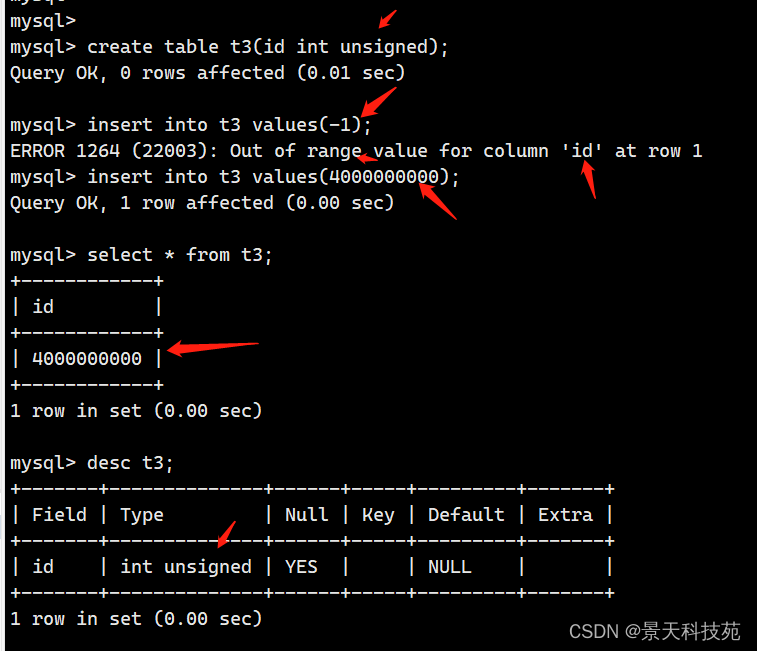
not null : 不为空
create table t4(id int not null , name varchar(11));
insert into t4 values(1,"张宇");
insert into t4 values(null,"张宇"); error
insert into t4(name) values("李四"); error
设置不为空约束,插入空就报错
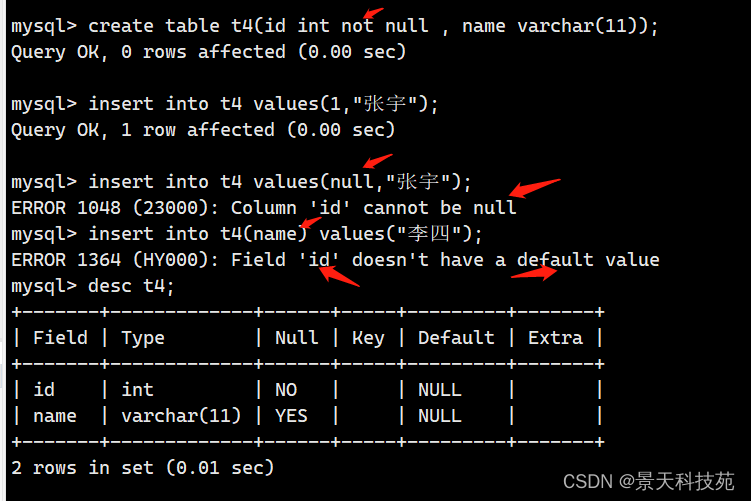
NULL值是处于0和1之间的某个值,他也表示一个值,只不过这个值是NULL值,而不是0。
在进行计算的时候,1与NULL则结果为NULL。而0与NULL则结果为0。
1或NULL则结果为1,0或NULL则结果为NULL;可见NULL值是介于0和1之间的值。
另外非NULL既不是1也不是0,还是NULL
default : 默认值
create table t5(id int not null , name varchar(11) default "沈思雨" );
insert into t5 values(1,null);
insert into t5(id) values(2);
设置了默认值后,插入时填入值,就是设置的值,非全列插入时,不写该字段的值,就用默认值
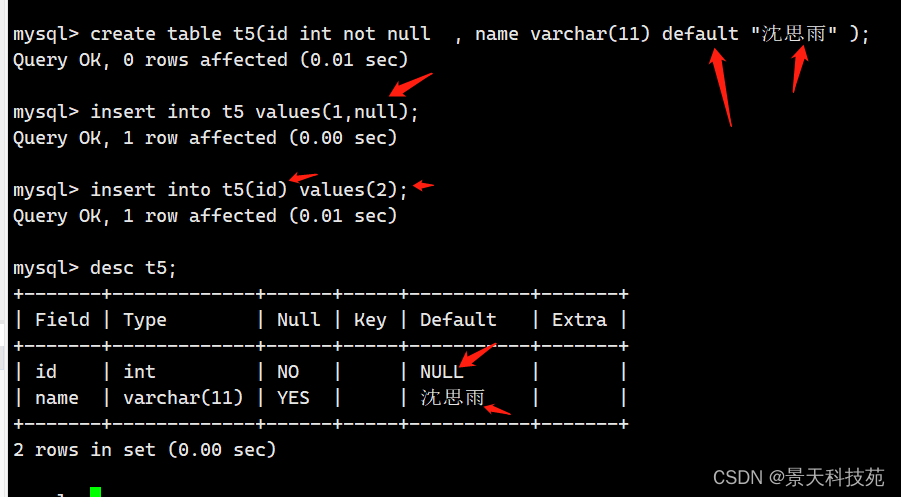
create table t5_2(id int not null default "1111" , name varchar(11) default "沈思雨" );
insert into t5_2 values(); # 在values里面不写值,默认使用默认值;
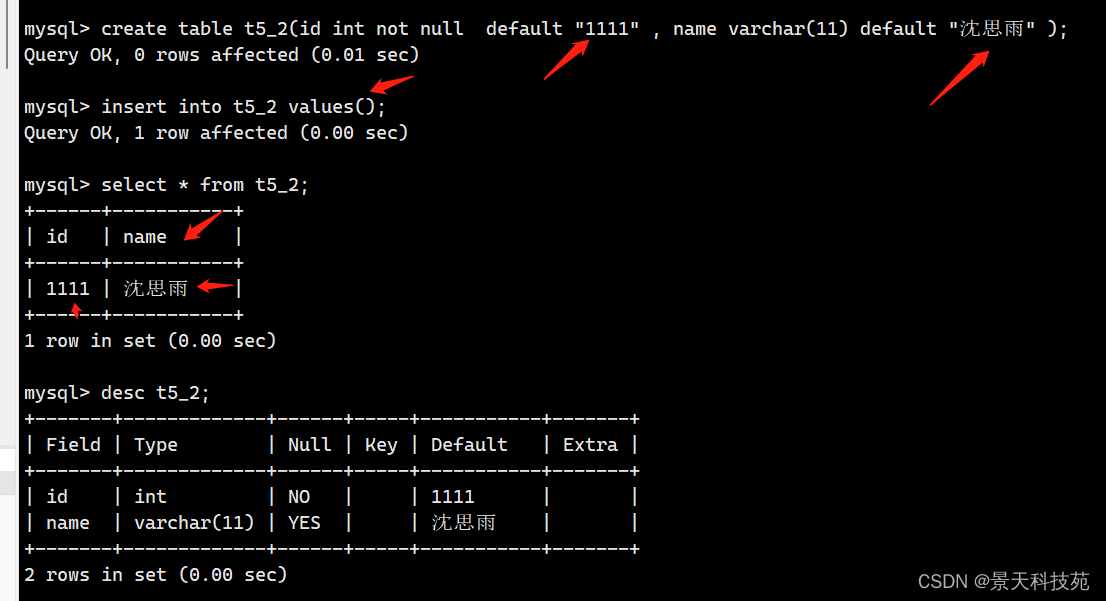
unique: 唯一约束
加入唯一索引(索引的提出是为了加快速度,一味地乱加索引不会提高查询效率,索引是有一个文件来存索引)
唯一 可为null 标记成: UNI
create table t6(id int unique , name char(10) default "赵万里" );
insert into t6(id) values(1);
insert into t6(id) values(1); error
insert into t6(id) values(null);
insert into t6(id) values(null); # id变成了多个null
如果要删除null的字段,可以用 where 字段 is null 来删
唯一性约束,可以有多个null值,不违背唯一性约束
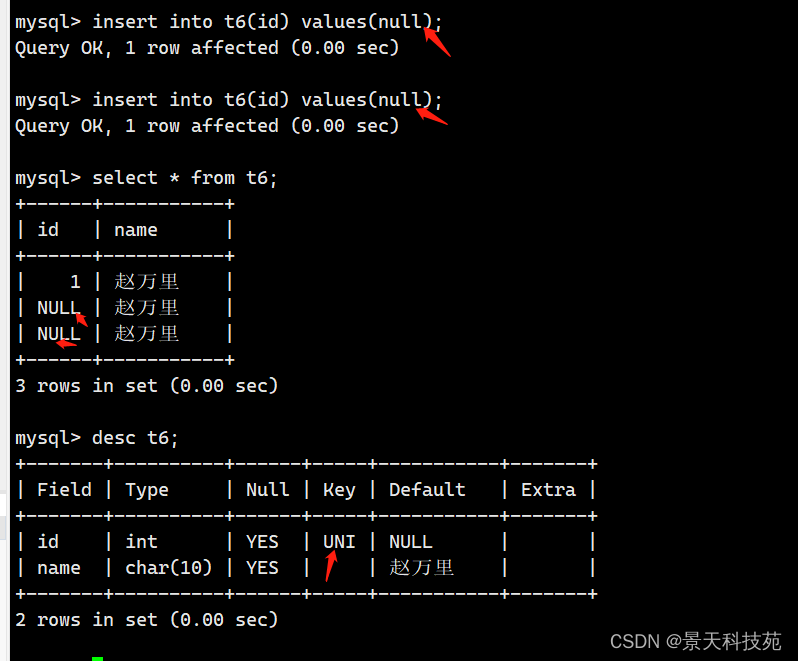
primary key: 主键
[ 唯一 + 不为null ] PRI 标记数据的唯一特征
一个表中,只能设置一个字段为一个主键,unique唯一约束可以设置多个
创建主键
create table t7(id int primary key , name varchar(10) default "赵沈阳");
insert into t7(id) values(1);
insert into t7(id) values(1); error
insert into t7(id) values(null); error
设了主键,该字段不能重复,不能为空
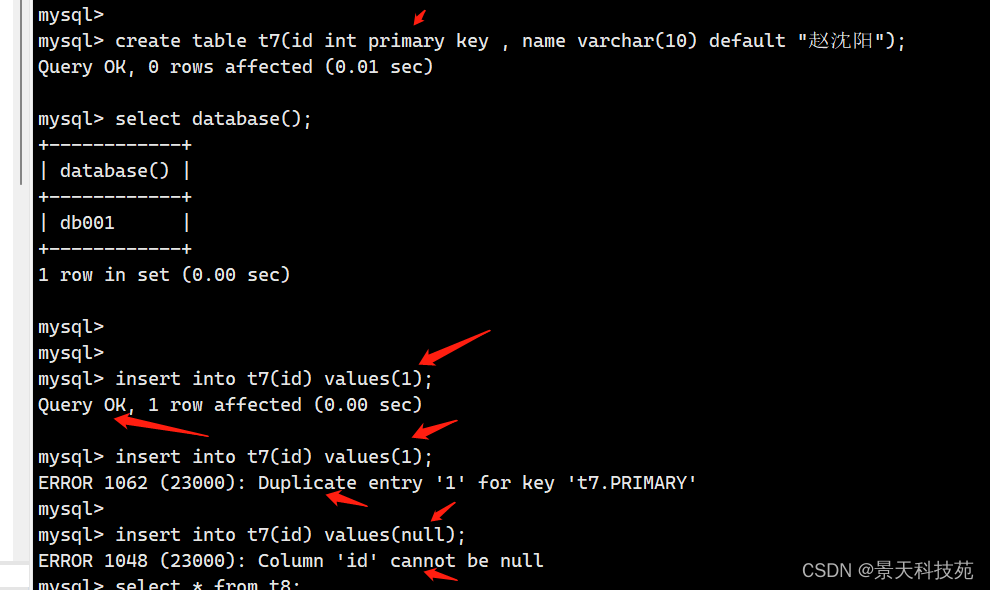
unique + not null => PRI
create table t8(id int unique not null , name varchar(10) default "赵沈阳" );
设置了唯一性约束,且不为null,功能就跟primary key一样了
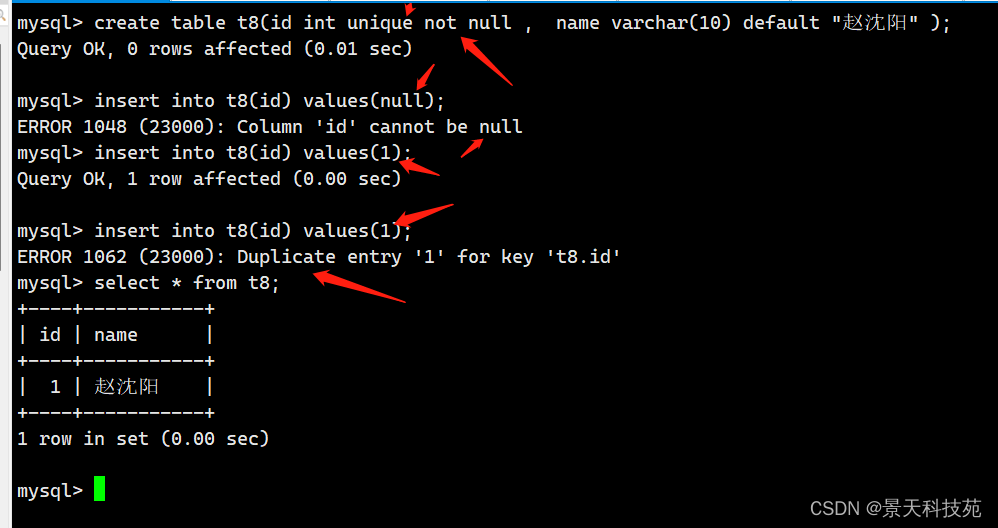
如果没有设置primary key,设置了unique not null ,默认把unique +not null 设置的字段设为主键

primary key / unique + not null => 优先把primary key 作为主键;
create table t9(id1 int unique not null , id2 int primary key );
同时设置了unique +not null 和 primary key 。优先把primary key 作为主键
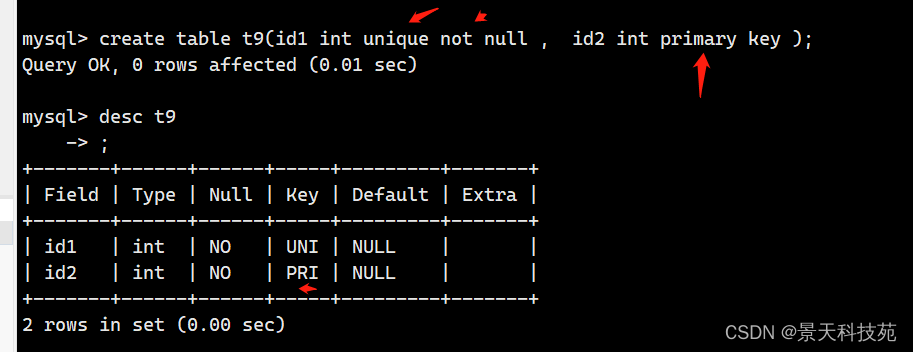
一个表只能设置单个字段为一个主键;
create table t10(id1 int primary key , id2 int primary key ); error

auto_increment: 自增加一
一般配合 主键或者unique 使用
create table t11(id int primary key auto_increment , name varchar(255) default "敬文栋");
insert into t11 values(1,"张三");
insert into t11 values(null,"李四");
insert into t11(id) values(null);
# 使用默认值或者自增插入数据
insert into t11 values();
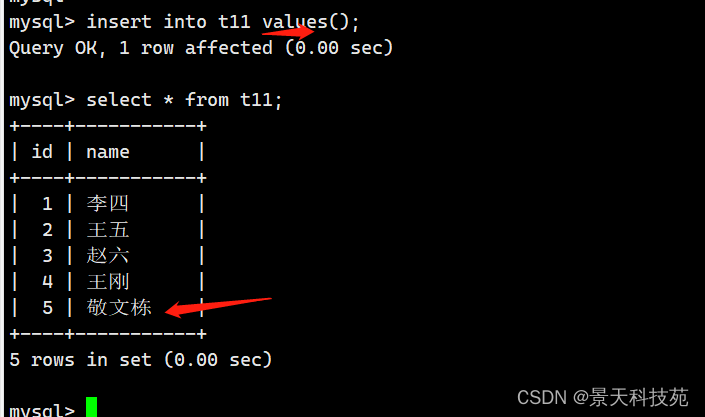
删除数据,这是删除所有数据
delete from t11;
删除数据 + 重置id
truncate table t11;
主键自增,可以用0,null,default占位
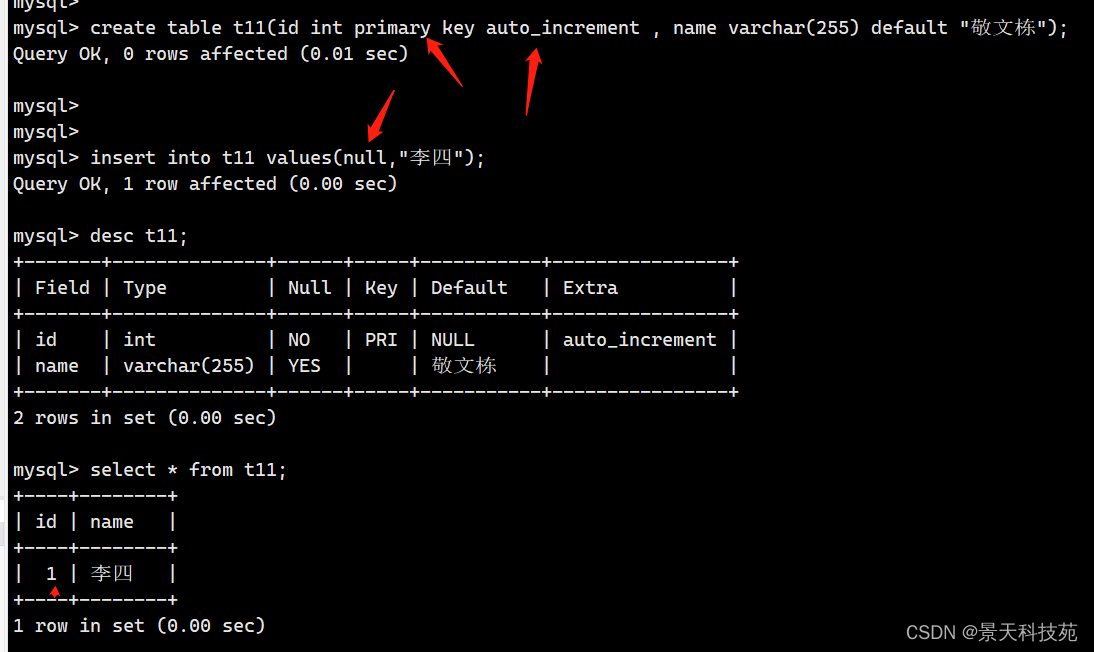
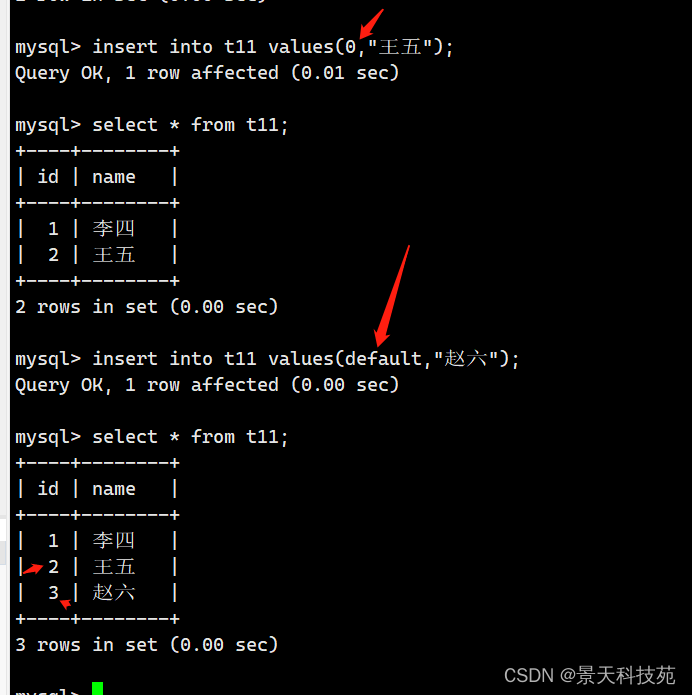
删除一条数据后,如果再添加不想主键从下一个开始,需要在添加之前,复位主键
删除数据后,执行下面的sql
如果是中途删除,先查看一下目前的auto_increment
show create table student;| student | CREATE TABLE `student` (`id` int NOT NULL AUTO_INCREMENT,`name` varchar(20) NOT NULL,`age` int NOT NULL,`birthday` date DEFAULT NULL,`is_del` tinyint DEFAULT '0',`height` decimal(3,2) DEFAULT NULL,`cls_id` varchar(6) NOT NULL,PRIMARY KEY (`id`),KEY `fk_class` (`cls_id`),CONSTRAINT `fk_class` FOREIGN KEY (`cls_id`) REFERENCES `class` (`id`)
) ENGINE=InnoDB AUTO_INCREMENT=20 DEFAULT CHARSET=utf8 |
AUTO_INCREMENT=几 下次插入时就从几开始递增
ALTER TABLE (表名) AUTO_INCREMENT = 1;
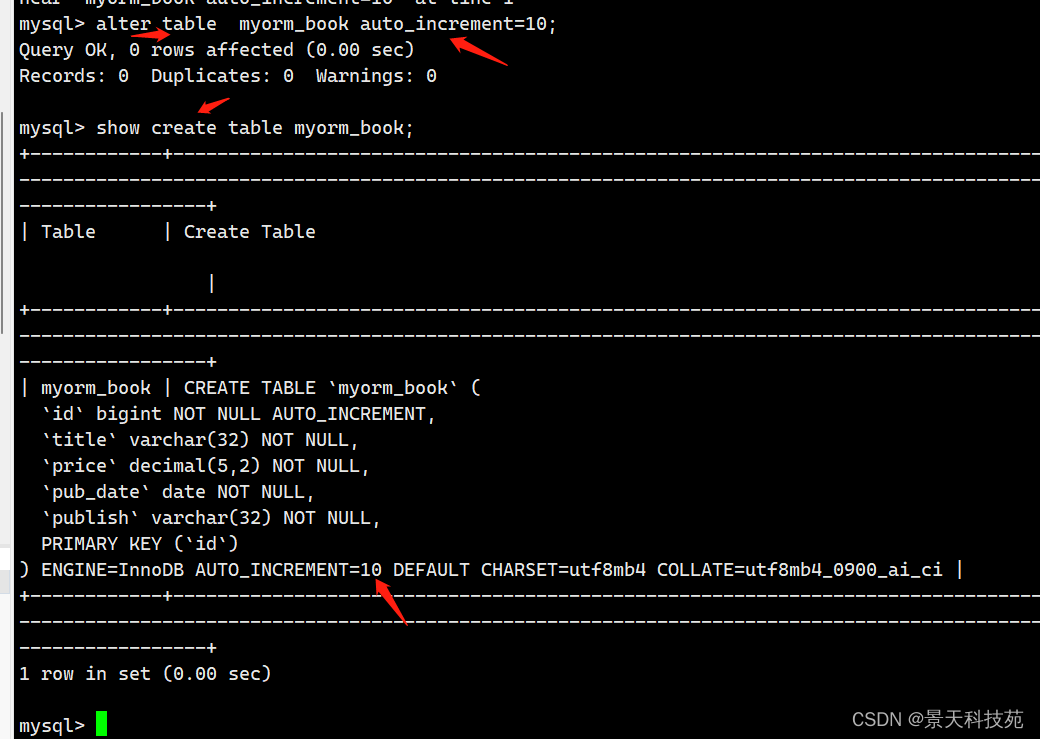
zerofill : 零填充 (配合int使用,不够5位拿0来填充)
create table t12(id int(5) zerofill);
insert into t12 values(1234567);
位数超了之后,按写入的数据直接插入
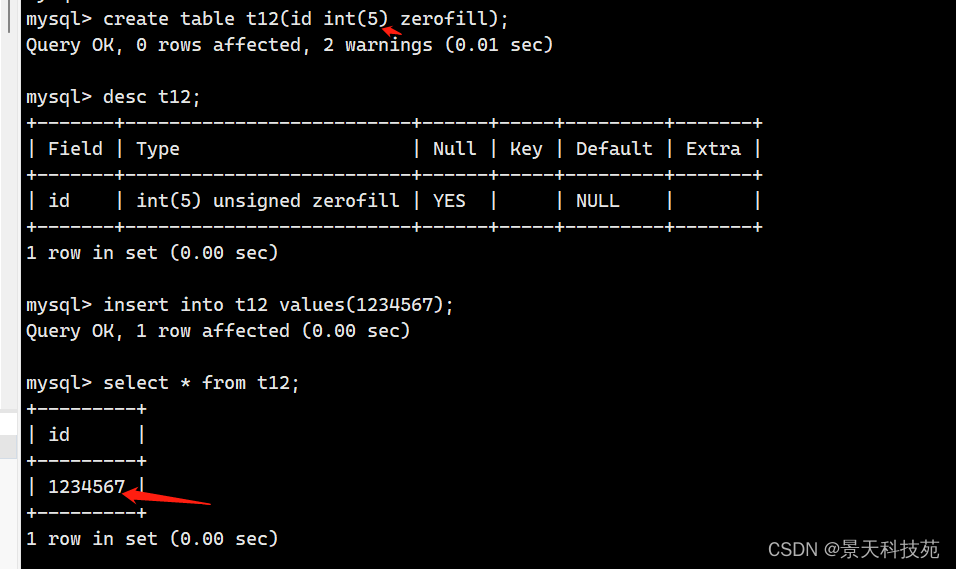
insert into t12 values(12);
位数不足,前面补0
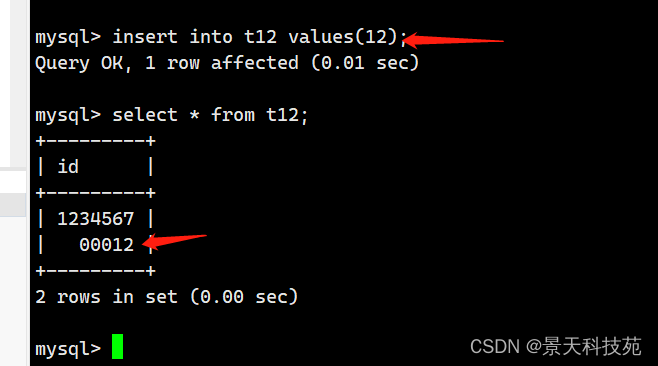







(100分))






)


:用 PLS 偏最小二乘分析大豆脂肪影响因素)

